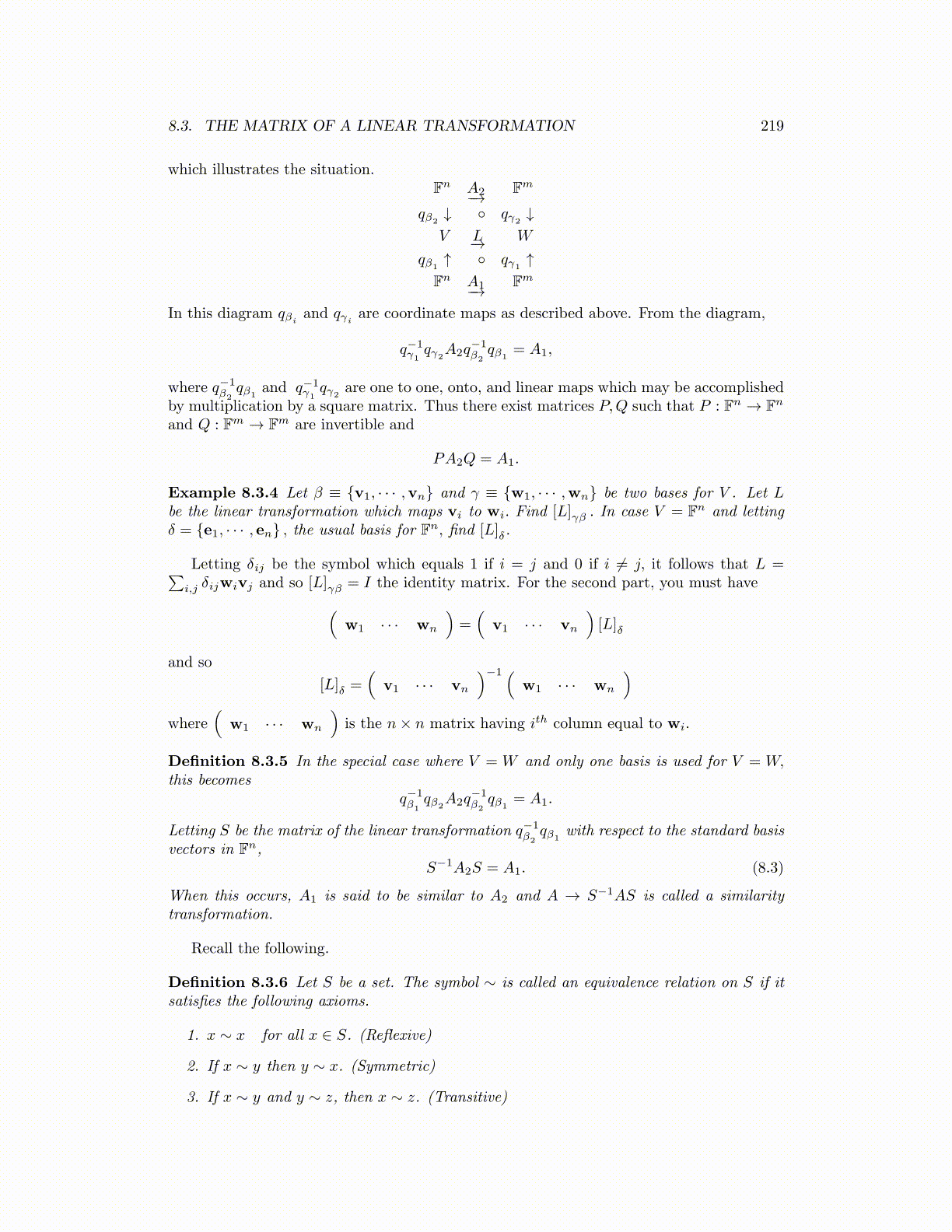
8.3. THE MATRIX OF A LINEAR TRANSFORMATION 219
which illustrates the situation.Fn A2−→ Fm
qβ2↓ ◦ qγ2
↓V L−→ W
qβ1↑ ◦ qγ1
↑Fn A1−→ Fm
In this diagram qβiand qγi
are coordinate maps as described above. From the diagram,
q−1γ1qγ2
A2q−1β2qβ1
= A1,
where q−1β2qβ1
and q−1γ1qγ2
are one to one, onto, and linear maps which may be accomplishedby multiplication by a square matrix. Thus there exist matrices P,Q such that P : Fn → Fn
and Q : Fm → Fm are invertible and
PA2Q = A1.
Example 8.3.4 Let β ≡ {v1, · · · ,vn} and γ ≡ {w1, · · · ,wn} be two bases for V . Let Lbe the linear transformation which maps vi to wi. Find [L]γβ . In case V = Fn and lettingδ = {e1, · · · , en} , the usual basis for Fn, find [L]δ.
Letting δij be the symbol which equals 1 if i = j and 0 if i ̸= j, it follows that L =∑i,j δijwivj and so [L]γβ = I the identity matrix. For the second part, you must have(
w1 · · · wn
)=(
v1 · · · vn
)[L]δ
and so
[L]δ =(
v1 · · · vn
)−1 (w1 · · · wn
)where
(w1 · · · wn
)is the n× n matrix having ith column equal to wi.
Definition 8.3.5 In the special case where V = W and only one basis is used for V = W,this becomes
q−1β1qβ2
A2q−1β2qβ1
= A1.
Letting S be the matrix of the linear transformation q−1β2qβ1
with respect to the standard basisvectors in Fn,
S−1A2S = A1. (8.3)
When this occurs, A1 is said to be similar to A2 and A → S−1AS is called a similaritytransformation.
Recall the following.
Definition 8.3.6 Let S be a set. The symbol ∼ is called an equivalence relation on S if itsatisfies the following axioms.
1. x ∼ x for all x ∈ S. (Reflexive)
2. If x ∼ y then y ∼ x. (Symmetric)
3. If x ∼ y and y ∼ z, then x ∼ z. (Transitive)